Meet 40 beautiful pictures of purple pheasant: a rare and beautiful bird in Hoang Lien National Park
According to information from Hoang Lien National Park, the rare bird species photographed in the natural forests of Sa Pa is the Temminck’s Tragopan (also known as the Crimson-horned Pheasant), scientifically named Tragopan temminckii (Gray, 1831). It belongs to the family Phasianidae (Pheasants) and the order Galliformes (Gallinaceous birds).
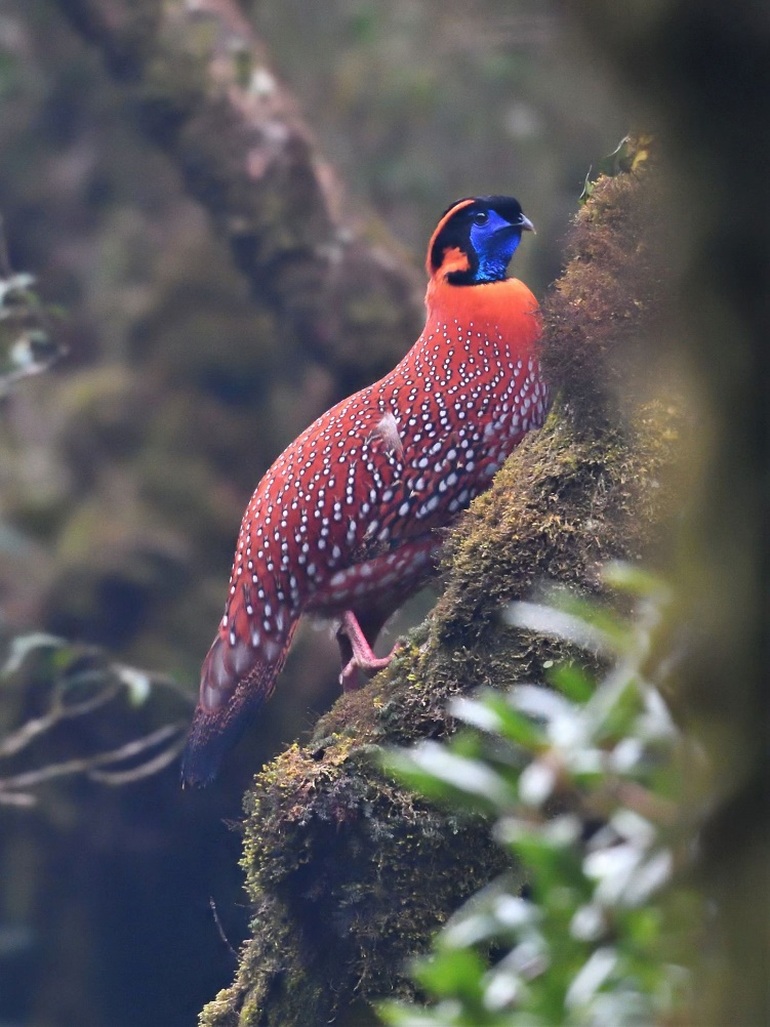
This bird species exhibits vibrant and striking colors, making it incredibly rare to encounter. In the Red Book of Vietnam, the Temminck’s Tragopan is classified as CR (Critically Endangered), indicating it faces an extremely high risk of extinction.

Close-up of brilliant purple pheasant
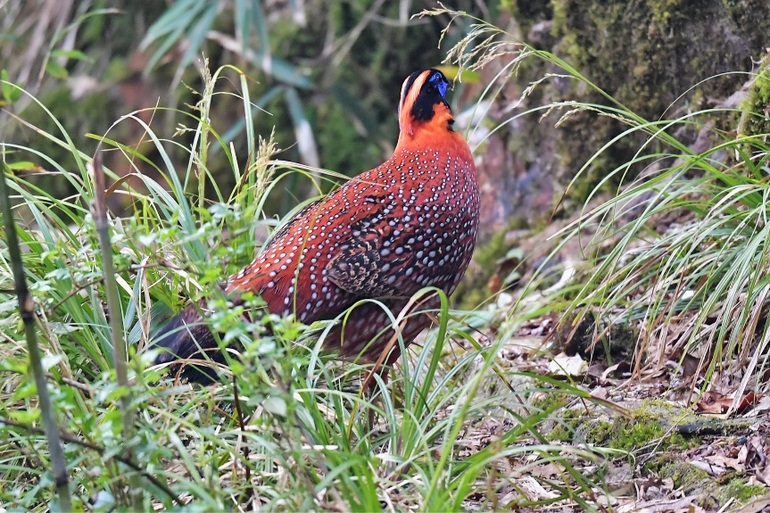
The Temminck’s Tragopan, captured by photographer Do Dinh Dong (Photo by Hoang Lien National Park)
According to descriptions and observations, adult male Temminck’s Tragopan has a vibrant red and brownish-black plumage. The skin around its eyes has a slightly deep blue color, and its bare blue facial skin has a faint yellow hue with red spots. The neck, forehead, behind the eyes, the front part of the neck ruff, both sides of the head, and around the neck have a black coloration. The back has light brown circular spots with black edges. The wing feathers are dark brown with reddish-brown patterns and stripes. The underparts are light brown, and the tail is light brown with yellow and black spots and stripes.
Juvenile males have a similar appearance to females but slightly larger, and they may have a mix of red and black on their heads. The upper breast area is dark black. Adult females resemble adult males but have brownish-black and white patterns in their plumage, which may not be as visually striking as the males. Both males and females have black beaks, brown eyes, and pink legs.
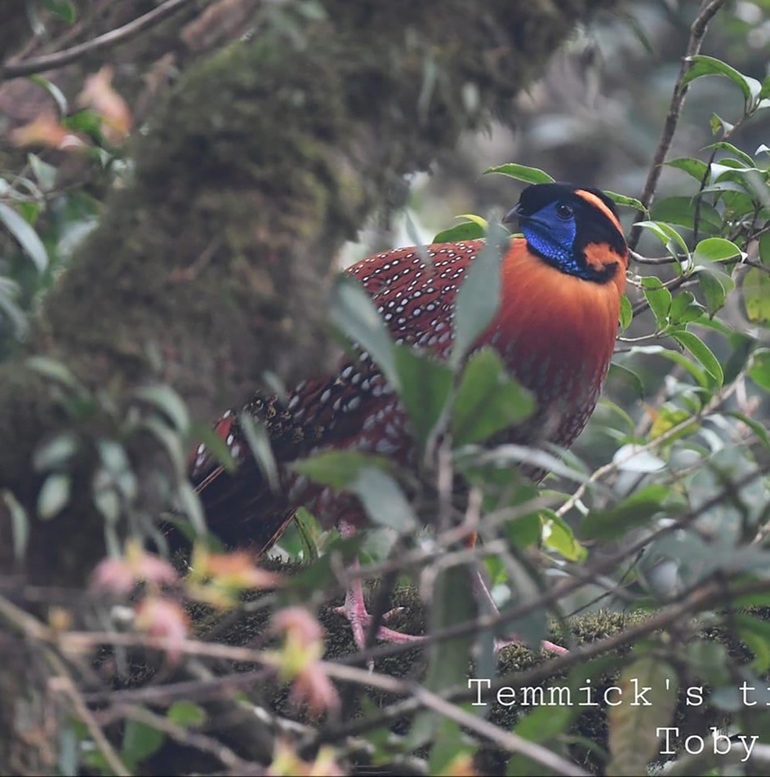
The Temminck’s Tragopan (Crimson Horned Pheasant), photographed by Toby Trung in Hoang Lien National Park at an altitude of 2700m (Photo by Hoang Lien National Park)
In terms of biology and ecology, the Temminck’s Tragopan lays eggs in April and the chicks leave the nest in July. Each clutch consists of 3-5 eggs. The eggs are small, oval-shaped, with one end larger than the other, and have a pale reddish-brown color with spotted brown markings.
One distinctive feature of this Tragopan species compared to other pheasants is that it builds its nest on tree branches. According to Delacour (1977), the birds lay eggs in April, with a clutch size of 7-8 eggs, and the incubation period is 28 days. They feed on various fruits, seeds, insects, and earthworms found in the forest.
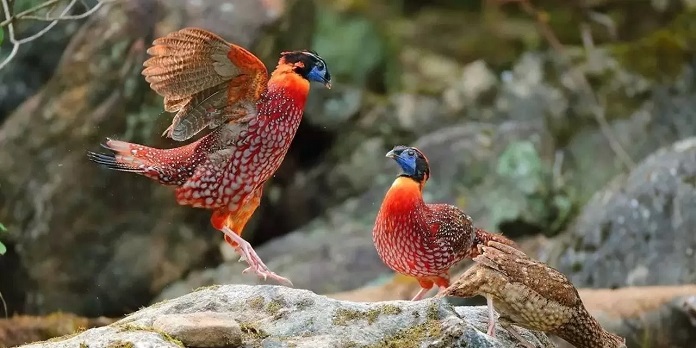
During the day, the Temminck’s Tragopan forages on the ground and roosts on low shrubs at night. They reside in small groups of 3-5 individuals in the deep, dense evergreen forests at high elevations with high humidity, ranging from 900 to over 2700m (Delacour, 1977).
According to local residents, the Temminck’s Tragopan has been spotted at altitudes above 2500m, occasionally even at 3000m.
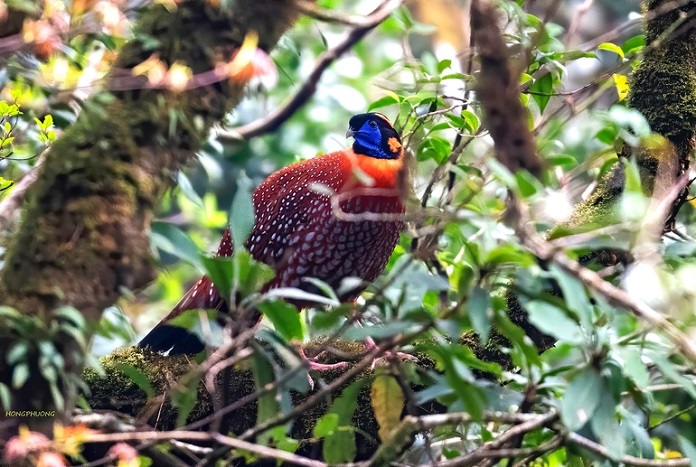
To protect this rare bird species, the Temminck’s Tragopan has been listed in the Vietnam Red Data Book (1992, 2000), and it is crucial to conduct surveys and research in the high mountainous areas of Hoang Lien National Park to gather data on natural populations.

In addition, the surrounding communities near Hoang Lien National Park need to enhance education and raise awareness among the local people to protect precious birds like the Temminck’s Tragopan, which has recently been discovered. Strict measures should be implemented to prohibit hunting, trading, and any activities that may pose a threat to the survival of this rare and precious bird species.